Plants with Red or Pink Flowers
Plants with red or pink flowers (especially the latter) can be found in many plant families and are a very diverse bunch in our area. Many small, almost prostrate species, typically flowering in spring or early summer may be found, with the rose, crane's-bill and pea families in particular having many species in this colour group.
It is worth bearing in mind that red (usually produced by anthocyanins) can be a very unstable colour in plants and many pink or red flowers fade to whitish long before their petals eventually wither and fall. In addition, white colour forms of red-flowered species are not that uncommon and can cause confusion.
As well as flower colour, it is important to take careful note of the exact petal shape - are the petals rounded, or do they came to a sharp point, for example; are there gaps between the petals or do they overlap; are the flowers solitary, or arranged in spikes or bunches.
Within the colour sections, the pictures are grouped so that similar-looking (though not necessarily closely-related) plants will be near each other.
This should help to reduce your search time. To keep things concise, not all species are shown in the colour keys, so you may have to go for a 'best match' to get you through to the next stage of the identification process. Particularly in large families where there are a number of very similar species, a representative species is shown here, but clicking on it will take you to a page that tells you how to tell the more difficult species apart.
Many plants will be obviously one colour or another, obviously five petalled, or obviously a woody shrub, etcetera. But many will be debatable. In such cases, I have tried to imagine how a flower might be perceived by others, especially beginners to plant identification. Generally this results in a plant appearing in more than one place on these pages, but some still remain problematic. In particular, the section labelled 'tubular flowers' contains a variety of flowers that might be considered to fall into that category and these generally have petals that are fused together to fully surround the sexual parts of the flower. But these tubes might be elongate like a pencil, or broad and bell-like. Flowers of two colours are entered under the colour that covers most of the flower, but truly bicoloured flowers may be entered under both colours. Woody plants with green stems that might not be considered woody, are entered under their flower colour or shape, as well as under the woody plants sections.
If you still can't find your plant, you either have something very interesting that you may wish to tell me about, or I just haven't got a picture
of it yet - I'm still working on the latter!!
Click on the pictures below to go to the species pages.
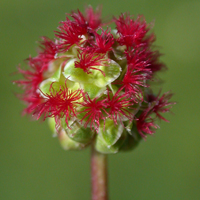 |
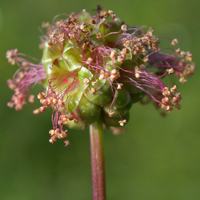 |
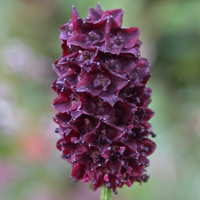 |
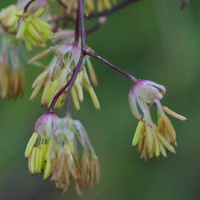 |
Burnets - Tight heads of flowers like little 'drumsticks' above compound leaves
|
Burnets - Tight heads of flowers like little 'drumsticks' above compound leaves
|
Burnets - Tight heads of flowers like little 'drumsticks' above compound leaves
|
Meadow-rues - Fine, open heads of many petalless flowers, which may appear reddish due to the coloured sepals
|
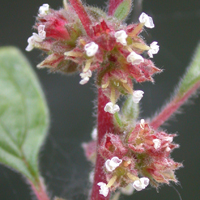 |
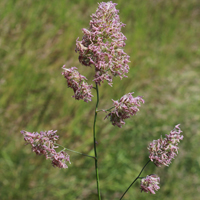 |
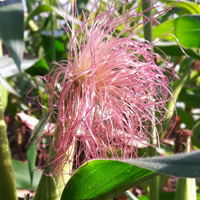 |
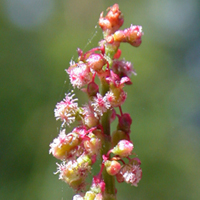 |
Pellitory-of-the-wall - Masses of tiny red/green, petalless flowers with white tips, crowded at the leaf bases. On walls, cracks in pavement and similar places
|
Grasses - Pinkish-tinged, petalless florets on slender stems above grassy leaves
|
Sweet Corn - Pink 'powder-puff' from the top of a solid tube. Plant grown as a field crop, or occasionally appearing as a weed of disturbed ground
|
Docks & Sorrels - Small, pendant flowers in branched flower spikes
|
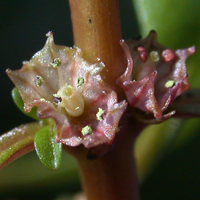 |
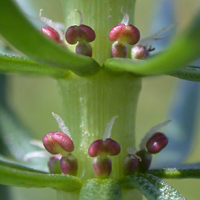 |
Common Water-purslane - Tiny (hand lens!) flowers in the leaf axils on succulent stems, growing on bare mud close to water
|
Mare's-tail - Tiny (hand lens!) flowers in whorled leaf axils on succulent stems, growing in water or water-logged ground
|
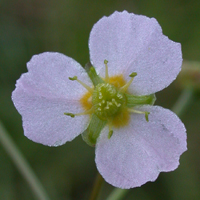 |
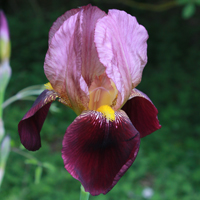 |
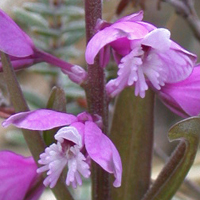 |
Water-plantains - Tiny flowers in a spreading, open head, growing from water or very wet ground
|
Irises - Three large, rounded petals hanging down, plus three smaller, less obvious petals standing upright in the centre
|
Milkworts - Small spikes of white, pink or blue flowers, each with the middle petal rolled into a thin tube and with a tiny, pale beard
|
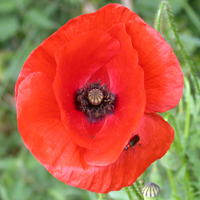 |
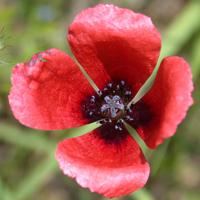 |
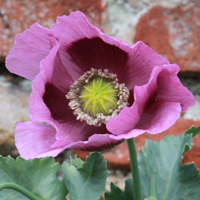 |
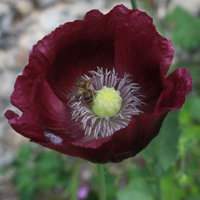 |
Poppies - Four broadly overlapping petals
|
Poppies - Four non-overlapping petals
|
Poppies - Four broadly overlapping petals in a range of pink/lilac shades with dark blotch at base
|
Poppies - Four broadly overlapping petals in a range of dark shades with dark blotch at base
|
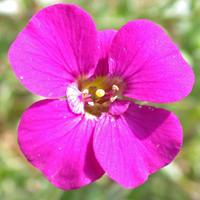 |
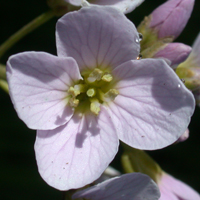 |
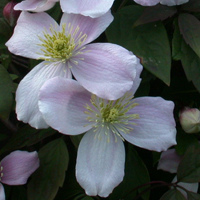 |
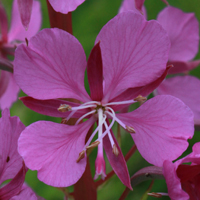 |
Aubretia - Low-growing plants, often trailing from walls
|
Cuckoo-flower - Pale pink flowers in open heads, followed by prominent seed pods
|
Clematis - Spring-flowering, vigorous, woody climbers
|
Rosebay Willowherb - Colonies of tall spikes of four-petalled flowers
|
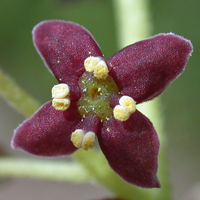 |
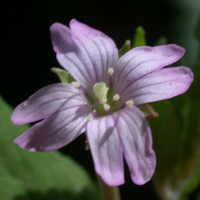 |
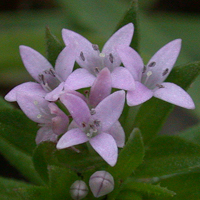 |
 |
Japanese Aucuba - Flowers in open or tight clusters on evergreen bushes
|
Willowherbs - Petals notched at the tip; flowers with long, narrow bases, elongating even more in fruit
|
Field Madder - Pinkish-purple flowers in small clusters
|
Squinancywort - Flowers in small bundles, with recurved petals; in limestone grassland
|
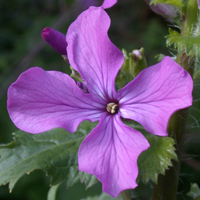 |
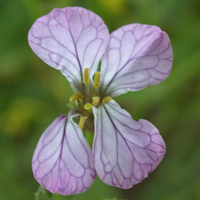 |
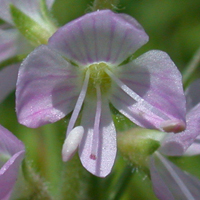 |
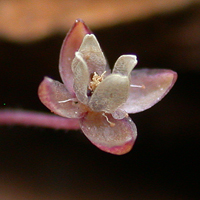 |
Cabbage Family - Pinkish-purple flowers in open heads, followed by prominent seed pods
|
Cabbage Family - Pinkish-purple flowers with darker veins
|
Speedwells - Pale pink flowers with the lower petal smaller than the other three
|
Pearlworts - Tiny, petalless flowers with reddish sepals, on creeping, moss-like plants
|
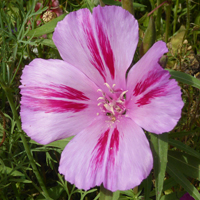 |
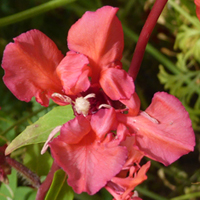 |
Clarkias - Upright annuals, the flowers with striped petals and a long, tubular base that becomes the seedpod later
|
Clarkias - Upright annuals, the flowers with narrow-based petals and a long, tubular base that becomes the seedpod later
|
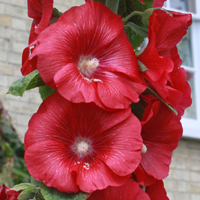 |
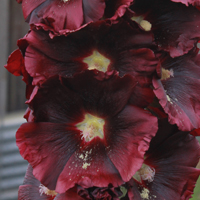 |
 |
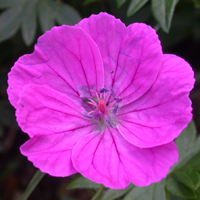 |
Hollyhocks - Large, rounded flowers in a very tall spike
|
Hollyhocks - Large, rounded flowers in a very tall spike
|
Campions - Broad, shallowly notched petals on very furry plants
|
Crane's-bills - Slightly notched petals, above rounded and deeply notched leaves
|
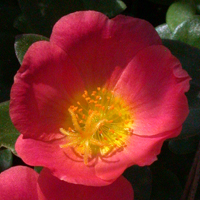 |
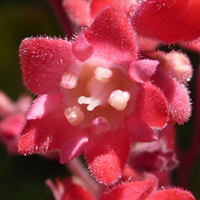 |
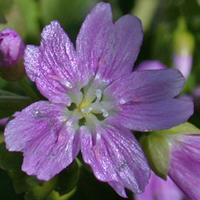 |
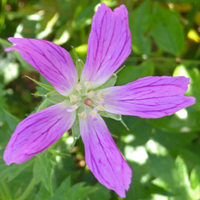 |
Common Purslane - Small, rose-like flowers on succulent, creeping plants
|
Coralbells - Lobes leaves in a basal rosette with many small flowers in an upright spike
|
Pink Purslane - Bright, shiny spring flowers on succulent plants
|
Crane's-bills - Low herbaceous plants with palmate leaves, flowers with very narrow petals
|
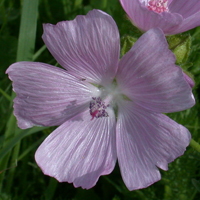 |
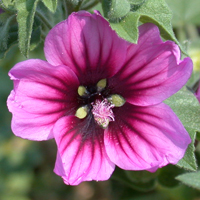 |
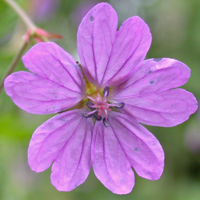 |
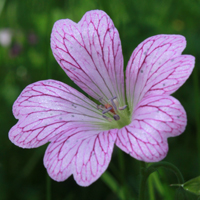 |
Mallows - Flowers with prominent, central spike of stamens
|
Mallows - Flowers with prominent, central spike of stamens
|
Crane's-bills - Notched petals, above rounded and deeply notched leaves
|
Crane's-bills - Slightly notched petals, above rounded and deeply notched leaves
|
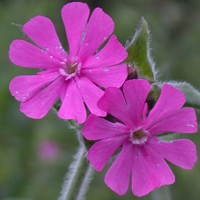 |
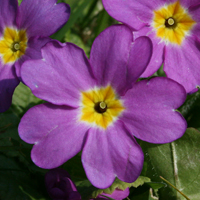 |
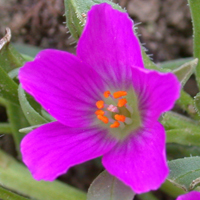 |
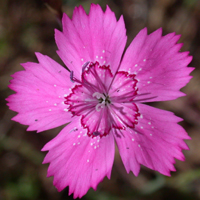 |
Campions - Broad, deeply notched petals
|
Primroses - Deep pink flowers with a yellow centre, arising from the centre of a rosette of leaves
|
Red-maids - Brilliant cerise flowers above narrow, slightly fleshy leaves
|
Maiden Pink - Petals with ragged edges and darker markings at the centre
|
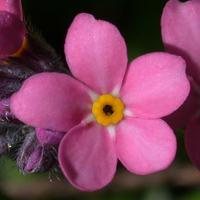 |
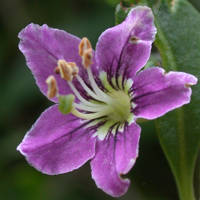 |
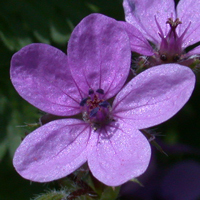 |
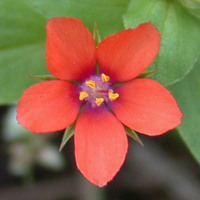 |
Forget-me-nots - Brightly-coloured spring flowers; usually blue
|
Teaplants - Solitary, purplish flowers on wiry, half-woody stems in hedgerows
|
Stork's-bills - Bright pink flowers above flattened rosettes of pinnate leaves
|
Scarlet Pimpernel - Low plants of bare and disturbed ground
|
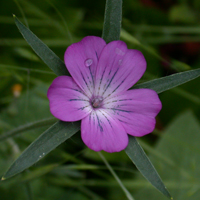 |
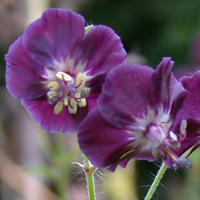 |
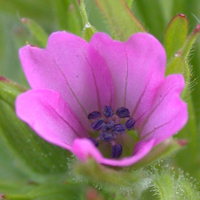 |
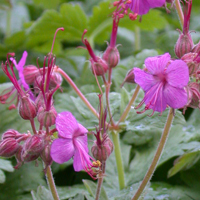 |
Common Corncockle - Notched petals, backed with long, pointed sepals that are longer than the petals
|
Crane's-bills - Maroon flowers above rounded and deeply notched leaves
|
Crane's-bills - Bright pink flowers above rounded and deeply notched leaves
|
Crane's-bills - Pink or white flowers above rounded and deeply notched leaves
|
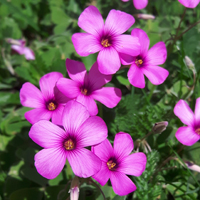 |
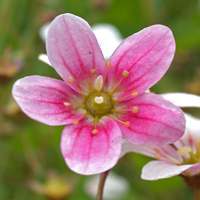 |
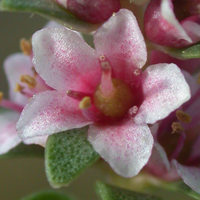 |
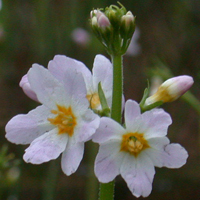 |
Pink-sorrels - Showy flowers above spreading patches of trifoliate leaves
|
Saxifrages - Showy flowers above moss-like, fleshy leaves
|
Sea Milkwort - Low stems with fleshy leaves, in coastal habitats
|
Water-violet - Flowers in whorled clusters on an upright stem, growing from open water
|
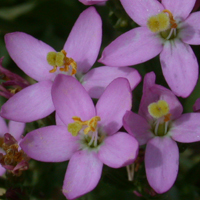 |
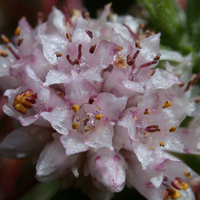 |
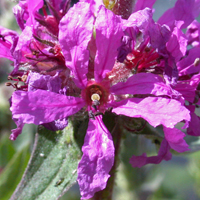 |
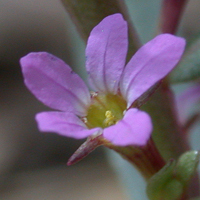 |
Common Centaury - Bright pink flowers in flat-topped heads on low plants
|
Common Dodder - Pale pink flowers on leafless, twining stems, trailing over other plants
|
Purple Loosestrife - Tall, slender spikes of many, narrow-petalled flowers; leaves narrow
|
Grass-poly - Small flowers, solitary in the leaf axils; rare
|
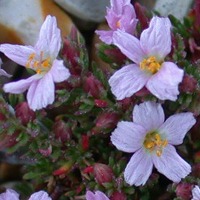 |
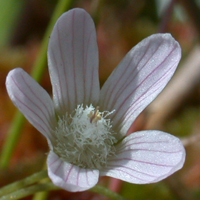 |
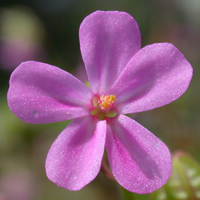 |
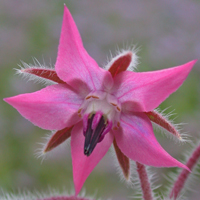 |
Sea-heath - Creeping, ground-hugging plants; uncommon in coastal habitats
|
Bog Pimpernel - 'Pin-striped' flowers on plants forming low mats in acid bogs
|
Crane's-bills - Bright pink flowers above rounded and notched leaves
|
Borage - Star-shaped, nodding flowers on bristly plants; flowers usually blue
|
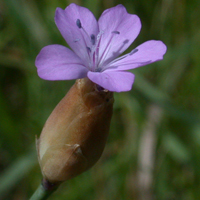 |
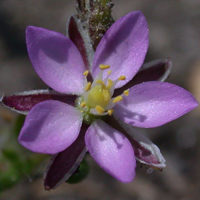 |
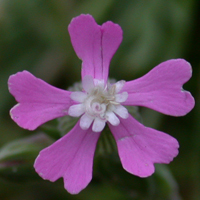 |
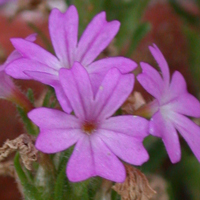 |
Proliferous Pink - Individual flowers open one at a time from a swollen base enclosing several buds
|
Spurreys - Low plants with fleshy, needle-like leaves. In sandy or coastal habitats
|
Catchflys - Narrow, notched petals
|
Fairy Foxglove - Five irregular-shaped petals on small plants growing from walls; rare
|
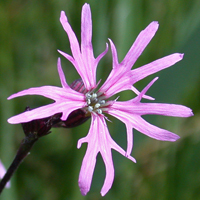 |
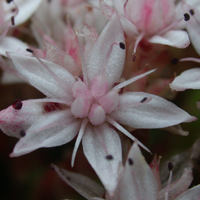 |
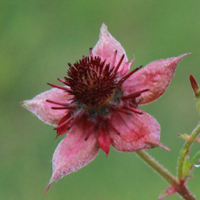 |
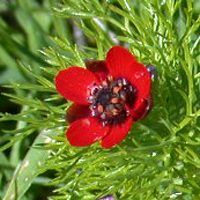 |
Ragged Robin - Petals very deeply cut and ragged
|
Stonecrops - Flowers in heads with long, obvious stamens, above very fleshy leaves
|
Marsh Cinquefoil - Dull, dirty red flowers, often misshapen; wet areas
|
Pheasant's-eyes - Brilliant red flowers above fine, feathery leaves; disturbed ground, very rare
|
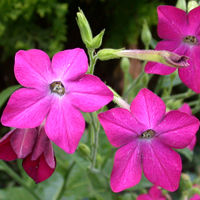 |
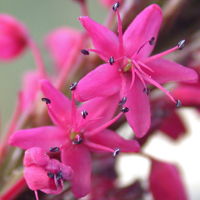 |
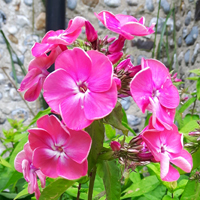 |
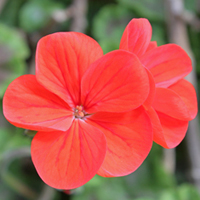 |
Bedding Tobacco - Petals fused into a narrow tube at the base, in small clusters atop stickily-hairy stems
|
Red Bistort - Spikes of five-petalled flowers held well above the leaves
|
Phlox - Showy flowers in shades of red, pink, purple and white, in late summer
|
Pelargoniums - Stiff-stemmed, succulent plants with coloured leaves and rich red, pink or white flowers
|
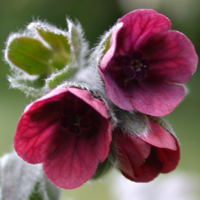 |
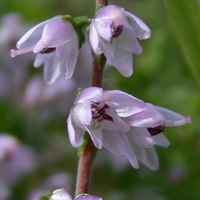 |
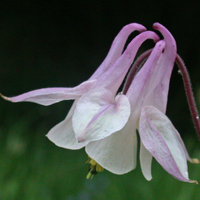 |
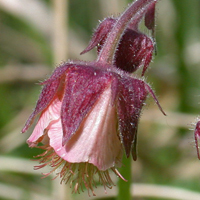 |
Common Hound's-tongue - Deep maroon-red flowers in unfurling clusters
|
Common Heather - Five-petalled flowers in showy spikes in late summer, on low, wiry subshrubs, often carpetting the ground on acid heaths
|
Columbines - Complicated flowers with five petals and five petal-like sepals; petals have long nectar spurs at back
|
Water Avens - Dull, nodding flowers; wet, shady areas
|
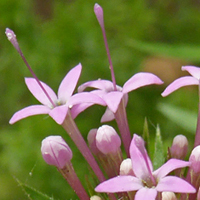 |
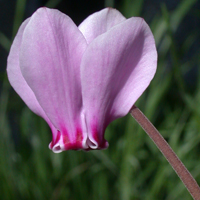 |
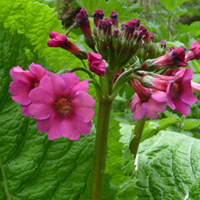 |
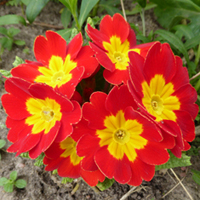 |
Caucasian Crosswort - Flowers in rounded clusters at the ends of trailing stems with linear leaves in whorls of 6-9
|
Cyclamens and sowbreads - Petals reflexed back on themselves, often appearing above ground without the leaves
|
Cowslips - Flowers in a series of tiers or whorls around an upright stem. Large leaves with crinkled surfaces
|
Primroses - Early spring flowers in wooded and grassy areas
|
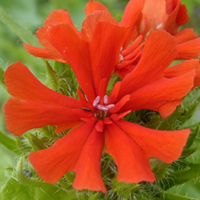 |
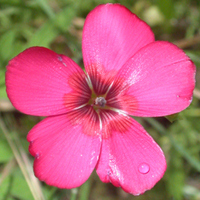 |
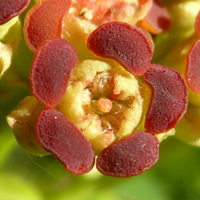 |
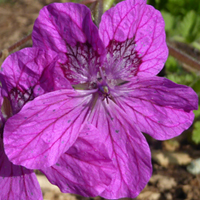 |
Maltese-Cross - Rich scarlet flowers in a head at the top of upright, coarsely hairy stems
|
Crimson Flax - Slender-stemmed plants with narrow leaves and large flowers at the tops of the stems
|
Spurges - Shrub-like plants with lush leaves and large, rounded clusters of reddish-brown flowers and milky sap
|
Stork's-bills - Escaping garden ornamental with petals bearing reddish blotches
|
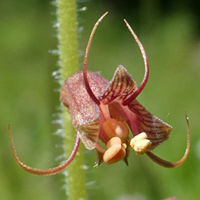 |
 |
Pick-a-back-plant - Flowers in slender spikes, each with greatly reduced, spike-like petals
|
Ivy-leaved Pelargonium - Narrow-petalled, red, white or pink flowers above palmate, slightly succulent leaves
|
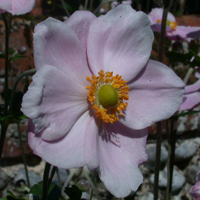 |
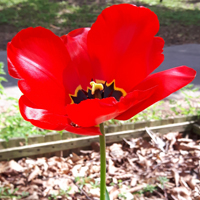 |
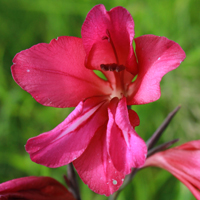 |
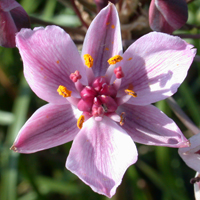 |
Anemones - Petal-like sepals vary in number, up to 30! Late summer/autumn flowering
|
Tulips - Bright and showy spring flowers, from bulbs
|
Gladioli - Six petals free at the top but forming a tube-like flower; several flowers carried in a one-sided, upright spike
|
Flowering-rush - Showy head of flowers above twisted, grass-like leaves. In water or wet ground
|
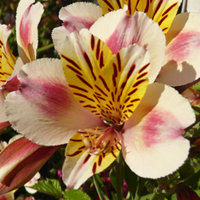 |
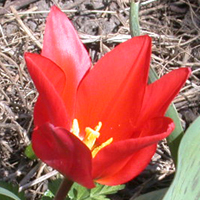 |
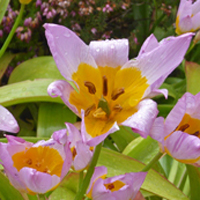 |
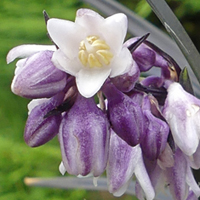 |
Lilies - Clusters of flowers marked with dark streaks
|
Tulips - Spring flowering from bulbs, flowers single atop a slender stem
|
Tulips - Spring flowering from bulbs, flowers single atop a slender stem
|
Black Ophiopogon - Small clusters of purple and white flowers carried above black, strap-like leaves
|
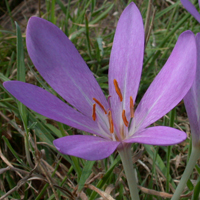 |
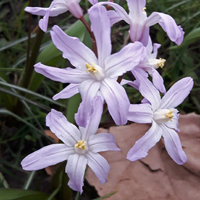 |
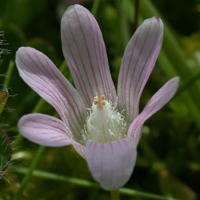 |
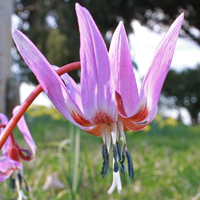 |
Meadow Saffron - Flowers fused into a narrow tube at the base and with six orange stamens in the centre
|
Glory-of-the-snow - Usually blue but sometimes pink flowers in a loose spike in early spring
|
Bog Pimpernel - 'Pin-striped' flowers on plants forming low mats in acid bogs
|
Dog's-tooth Violet - Petals reflexed backwards; flowers singly on slender stem above dark-spotted leaves
|
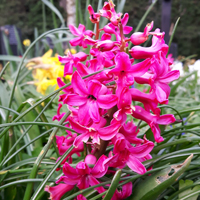 |
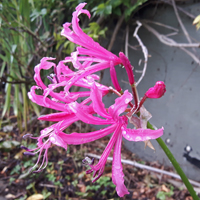 |
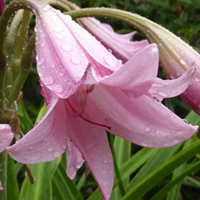 |
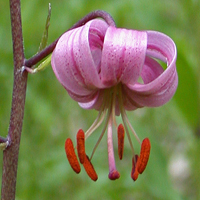 |
Hyacinths - Heavily-scented, six-petalled flowers in a compact spike
|
Bowden's Lily - A cluster of flowers on a bare stem, arising from the ground with no leaves
|
Lilies - A cluster of flowers on a bare stem, arising from the ground with strap-shaped leaves
|
Lilies - Petals reflexed, exposing long stamens; flowers alternate on a tall, open stem
|
 |
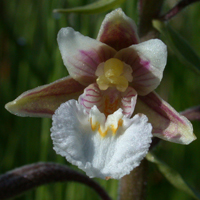 |
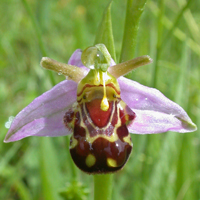 |
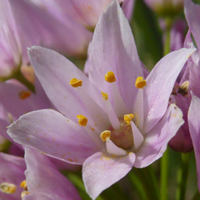 |
Irises - Three large, rounded petals hanging down, plus three smaller, less obvious petals standing upright in the centre
|
Marsh Helleborine - Flowers various shades of greenish-red, pink and white in an open spike; rare in wet ground
|
Common Bee Orchid - Unique, pink, green and maroon flowers in short spikes; grassy areas
|
Onions & Garlics - Rounded heads of six-petalled flowers, atop long, upright stalks
|
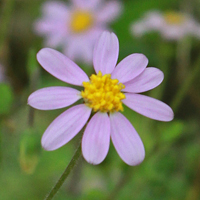 |
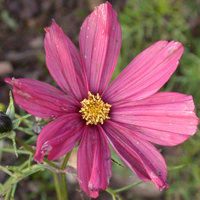 |
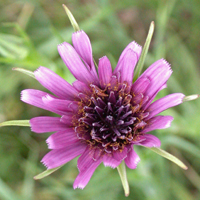 |
 |
Aster family - Flowers with many outer petals and yellow centres
|
Aster family - Flowers with many outer petals and yellow centres; shades of red, pink or white
|
Salsify - Purplish-pink flowers backed with elongated, lance-shaped sepals
|
Columbines - Complicated flowers with five petals and five petal-like sepals; petals have long nectar spurs at back
|
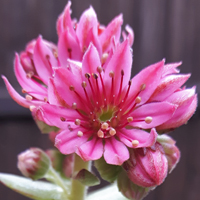 |
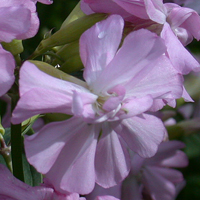 |
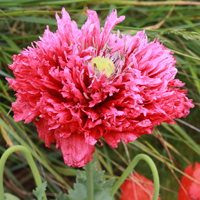 |
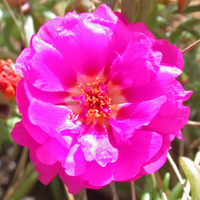 |
Houseleeks - Eight or more-petalled flowers on succulent stems above a rosette of fleshy leaves. Usually on walls or roofs
|
Common Soapwort - Double-flowered form
|
Poppies - Double-flowered forms; flowers nodding in bud, followed by prominent seed capsules
|
Ross-moss - Pompom flowers on creeping plants with succulent, needle-like leaves
|
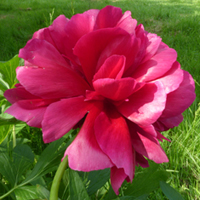 |
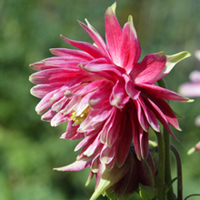 |
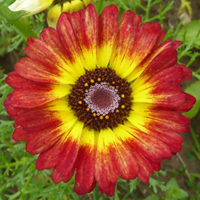 |
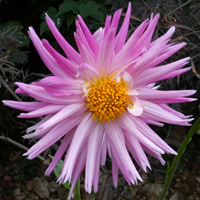 |
Peonies - Large, showy flowers with floppy, broadly overlapping petals
|
Columbines - Flowers like little pompoms in branched heads above hairless, three-parted leaves
|
Tricolour Chrysanthemum - Showy daisy flowers with bands of different colours on the petals and deeply cut leaves
|
Garden Dahlia - Showy daisy flowers with ornamental petals and pinnate, coarsely-toothed leaves
|
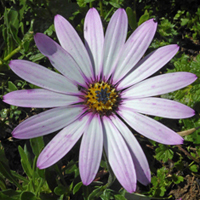 |
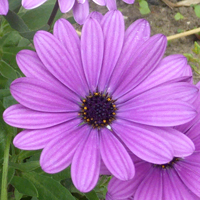 |
Cape Daisy - Large, showy flowers, the petals with darker undersides
|
Cape Daisy Hybrids - Large, showy flowers, the petals with darker undersides
|
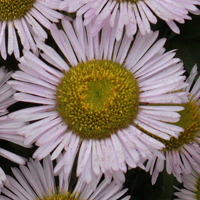 |
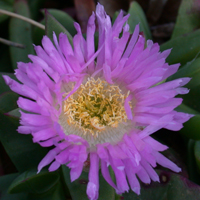 |
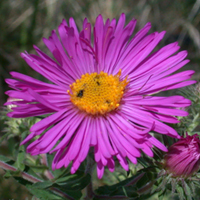 |
 |
Fleabanes - Daisy-like flowers with pink petals
|
Dewplants
& Sea-figs - Plants with thick, fleshy leaves, trailing on the ground or over walls
|
Asters & Daisies - Daisy-like flowers with pink petals
|
Tricolour Chrysanthemum - Showy daisy flowers with bands of different colours on the petals and deeply cut leaves
|
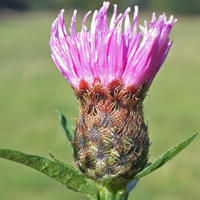 |
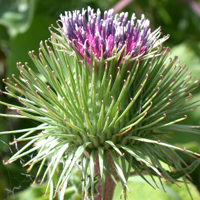 |
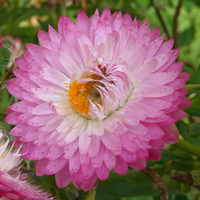 |
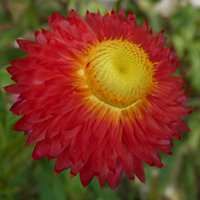 |
Knapweeds - Tight flowerheads with solid bases and 'fluffy' tops
|
Burdocks - Tight flowerheads with prickly bases and 'fluffy' tops
|
Strawflower - Daisy-like flowerheads with stiff, straw-like 'petals' in a wide variety of colours
|
Strawflower - Daisy-like flowerheads with stiff, straw-like 'petals' in a wide variety of colours
|
 |
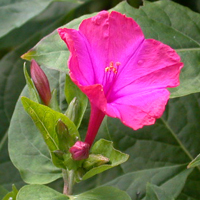 |
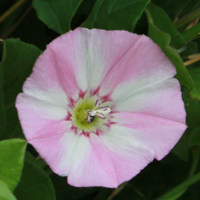 |
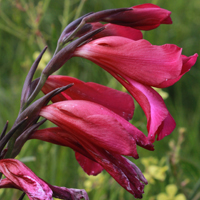 |
Meadow Saffron - Six petals free at the top but fused into a narrow tube at the base
|
Marvel-of-Peru - Flowers of yellow, orange, pink or red with narrow, tubular base, opening at night
|
Bindweeds - Showy, trumpet flowers on twining/sprawling stems
|
Gladioli - Six petals free at the top but forming a tube-like flower; several flowers carried in a one-sided, upright spike
|
 |
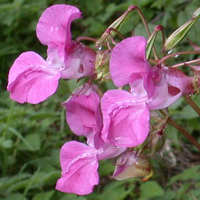 |
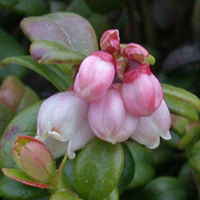 |
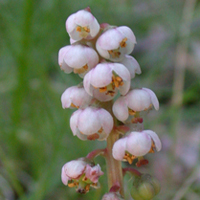 |
Lilies - A cluster of flowers on a bare stem, arising from the ground with strap-shaped leaves
|
Balsams - Delicate, hanging flowers with long nectar spur at back
|
Heath Family - Low subshrubs with small, evergreen leaves and flowers in small clusters
|
Wintergreens - Small plants with a rosette of basal leaves and a single spike of globular flowers
|
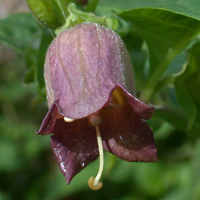 |
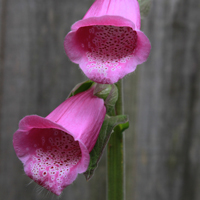 |
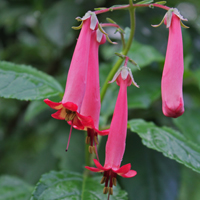 |
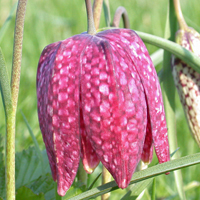 |
Deadly Nightshade - Dark maroon, bell-shaped flowers on bushy stems
|
Foxgloves - Impressive tall spikes of drooping, funnel-shaped flowers, spotted on the inside
|
Cape Figworts - Clusters of hanging flowers on more or less woody stems
|
Snake's-head
Fritillary - Six petals fused into a bell shape
|
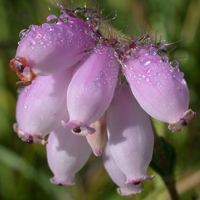 |
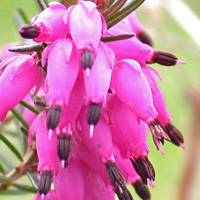 |
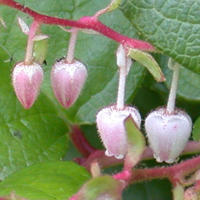 |
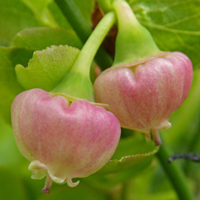 |
Heaths - Small bunches of nodding flowers, usually in wet heathland
|
Heaths - Showy clusters of hanging flowers with dark stamens; plants with needle-like leaves
|
Heath Family - Hanging pink or pinkish-white, urn-shaped flowers, usually on woody or twiggy plants
|
Heath Family - Low shrubs with wiry stems
|
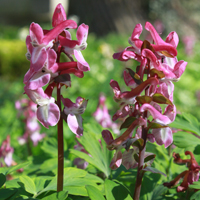 |
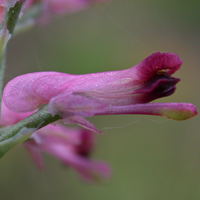 |
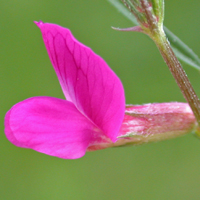 |
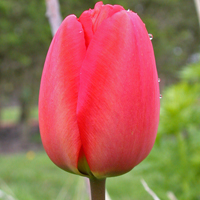 |
Fumitories - Flowers in loose spikes, arising from a bulbous root in spring
|
Fumitories - Flowers in loose spikes above ferny foliage; scrambling or trailing on disturbed ground
|
Peas & Vetches - Flowers solitary or in small clusters, on plants with trifoliate or ladder-like leaves
|
Tulips - Flask-shaped spring flowers with six, overlapping petals
|
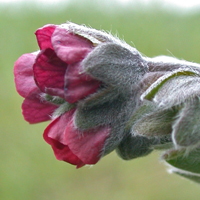 |
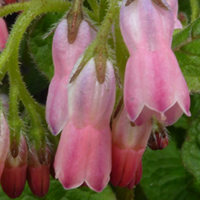 |
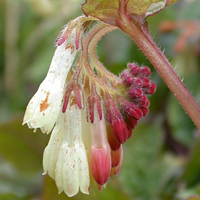 |
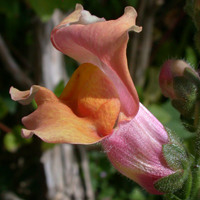 |
Common Hound's-tongue - Deep maroon-red flowers in unfurling clusters
|
Comfreys - Pink flowers in curling clusters
|
Comfreys - Red buds turn white as the flowers open
|
Snapdragons - Bright clusters of tubular, two-lipped flowers; any shade of red, pink, orange, yellow or white
|
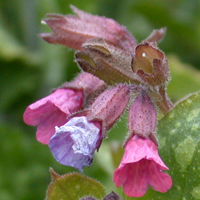 |
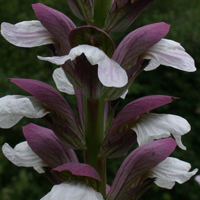 |
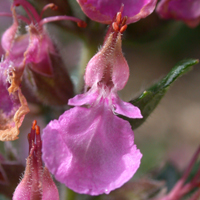 |
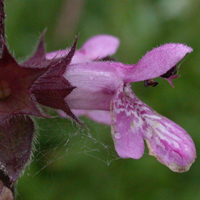 |
Lungworts - Flowers open red and turn blue as they age; leaves bristly hairy, often spotted
|
Bear's-breeches - Large, upright spikes of showy, two-coloured flowers
|
Germanders - Flowers tubular at the base, opening to a large, rounded lower lip, but no upper lip to the flower, leaving the stamens exposed
|
Dead-nettle Family - Flowers with a tubular base, opening to broadly five-lipped mouths
|
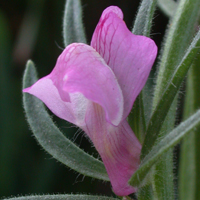 |
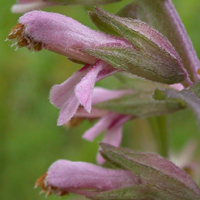 |
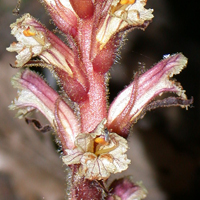 |
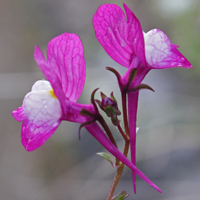 |
Snapdragons - Tubular flowers with broadened lips forming a two-lobed 'mouth'
|
Bartsias - Narrowly tubular flowers with a broadened lower lip
|
Broomrapes - Narrowly tubular flowers in a spike, arising straight from the ground with no leaves or stems
|
Toadflaxes - Narrow flowers with long spurs at the back, in upright spikes
|
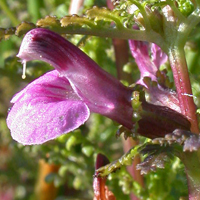 |
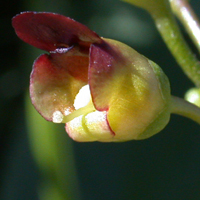 |
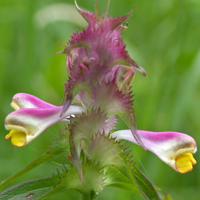 |
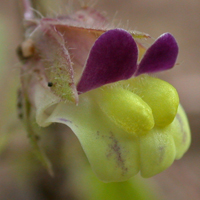 |
Louseworts - Tubular flowers with a narrow upper lip and broad lower lip
|
Figworts - Small flowers on tall stems, maroon, shading to greenish-yellow
|
Cow-wheats - Purple bracts surrounding tubular flowers
|
Fluellens - Small, tubular-based flowers with a two-lipped mouth; maroon and yellow
|
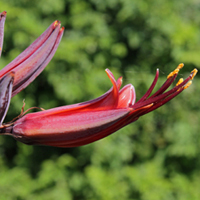 |
 |
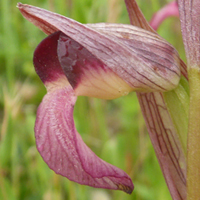 |
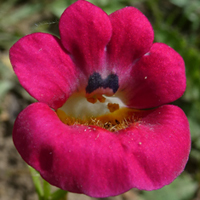 |
New Zealand Flaxes - Flowers with protruding stamens, carried in clusters on tall, branching spikes above long, sword-shaped leaves
|
Caucasian Crosswort - Flowers in rounded clusters at the ends of trailing stems with linear leaves in whorls of 6-9
|
Tongue Orchids - Strange, tubular-based flowers with a long, tongue-like, protruding lower lip with typically 2-8 flowers on a stem
|
Cape-jewels - Brightly coloured annuals in a variety of colours with a blunt spur at the back of the flower
|
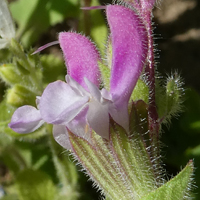 |
 |
Pink claries - Narrow, tubular-based flowers opening into a two-lipped mouth
|
Bleeding-hearts - Peculiar flowers with swollen bases and beak-like tips
|
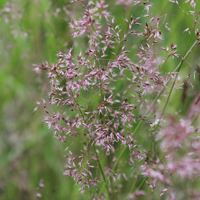 |
 |
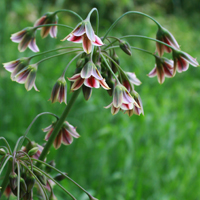 |
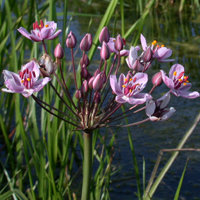 |
Grasses - An open mass of petalless, pink or red-tinted florets
|
Grasses - Pinkish-tinged, petalless florets on slender stems above grassy leaves
|
Honey Garlic - Nodding, bell-shaped, greenish flowers with varying amounts of reddish maroon colouring. On a tall stem from a bulb
|
Flowering-rush - Showy head of flowers above twisted, grass-like leaves. In water or wet ground
|
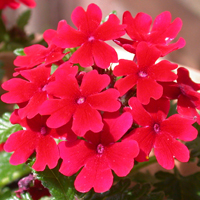 |
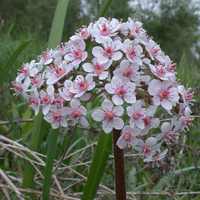 |
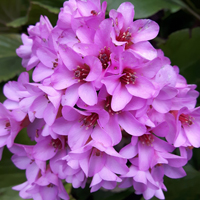 |
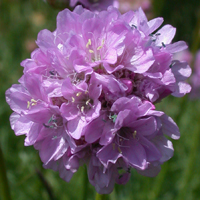 |
Vervains - Low, clustered heads of five-petalled flowers; any shade of red, purple, pink or white
|
Indian-rhubarb - Rounded, compact heads of five-petalled flowers, appearing before the leaves
|
Bergenias - Rounded, compact heads of five-petalled flowers; low, evergreen or herbacous plants
|
Common Thrift - Five-petalled flowers on a single stalk like a drumstick; coastal habitats
|
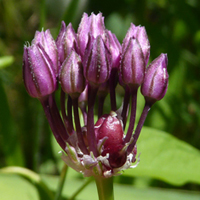 |
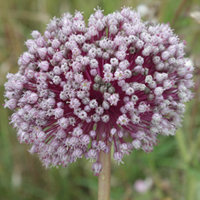 |
 |
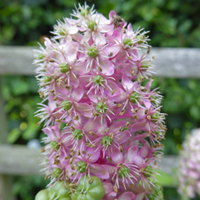 |
Onions & Garlics - Rounded, compact heads of six-petalled flowers, atop long, upright stalks
|
Onions & Garlics - Rounded, compact heads of six-petalled flowers, atop long, upright stalks
|
Lilies - A cluster of flowers on a bare stem, arising from the ground with no leaves
|
Pokeweeds - Tall, branching perennials with flowers crowded in sturdy, upright spikes
|
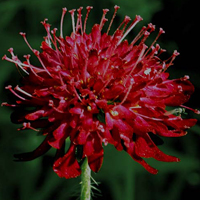 |
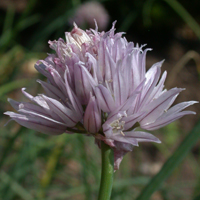 |
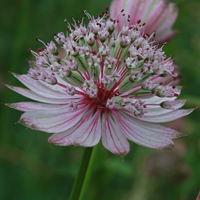 |
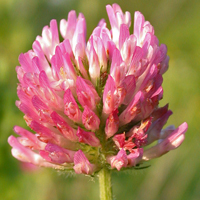 |
Scabiouses - Tight heads of many flowers, with the outer flowers having larger petals
|
Chives - A tight head of six-petalled flowers above grassy foliage
|
Masterworts - Many petal-like bracts around a head of many small flowers clustered in the centre
|
Clovers - Dense, rounded heads of narrow, tubular flowers; trifoliate leaves
|
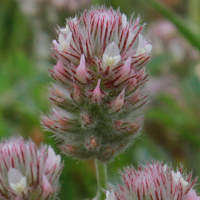 |
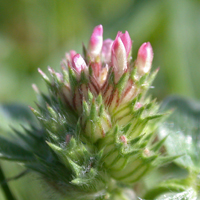 |
 |
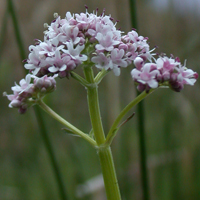 |
Clovers - Narrow, tubular flowers in a tight, rounded head on hairy plants with trifoliate leaves
|
Clovers - Narrow, tubular flowers in a tight, rounded head on creeping plants with trifoliate leaves
|
Pellitory-of-the-wall - Masses of tiny red/green, petalless flowers with white tips, crowded at the leaf bases. On walls, cracks in pavement etc.
|
Valerians - Many flowers in rounded or flattened heads on upright flower spikes; often in wet ground
|
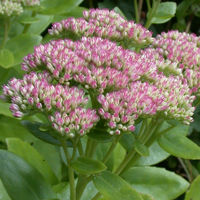 |
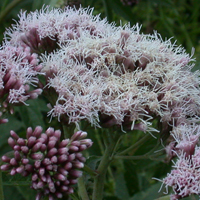 |
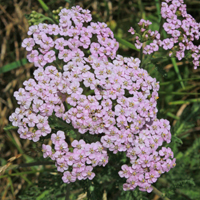 |
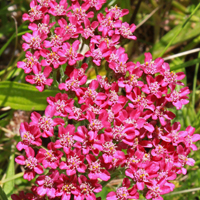 |
Stonecrops - Small flowers in large, flat or rounded heads above very fleshy leaves and stems
|
Hemp-agrimony - Large, 'fluffy' heads of small flowers on tall, leafy stems; usually in damp ground
|
Yarrow - Showy, flattened heads in grassy places; feathery leaves
|
Yarrow - Showy, flattened heads in grassy places; feathery leaves
|
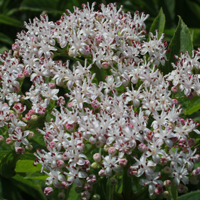 |
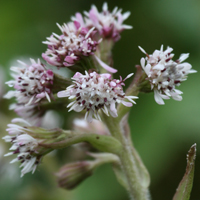 |
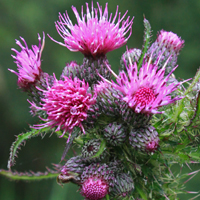 |
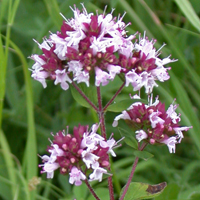 |
Elders - Flat, showy heads of many small flowers, above compound leaves
|
Heliotropes & Butterburs - Untidy heads of narrow flowers, usually appearing in winter or early spring, before the leaves
|
Thistles - Flowerheads clustered together to form tight bundles of scales with 'fluffy' tops
|
Mint Family - Clusters of bright pink flowers on plants with heavily sacented foliage
|
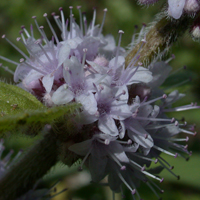 |
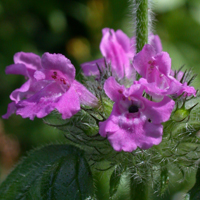 |
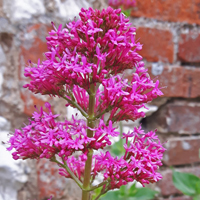 |
 |
Mint family - Clusters of tubular flowers, opening to a broad, four-lipped mouth; in whorls at the leaf bases
|
Mint family - Clusters of tubular flowers, opening to a broad, five-lipped mouth; in whorls at the leaf bases
|
Red Valerian - Large, tiered heads of small flowers with long spurs at the back; often in colonies of mixed pink, red and white-flowered plants
|
Common Dodder - Pale pink flowers on leafless, twining stems, trailing over other plants
|
 |
 |
 |
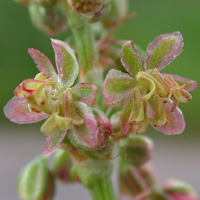 |
Common Heather - Five-petalled flowers in showy spikes in late summer, on low, wiry subshrubs, often carpetting the ground on acid heaths
|
Common Centaury - Bright pink flowers in flat-topped heads on low plants
|
Red Bistort - Spikes of five-petalled flowers held well above the leaves
|
Common Sorrel - Small flowers with greenish red petal-like tepals, in a spreading, leafless spike
|
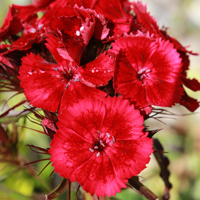 |
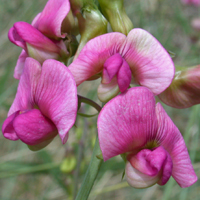 |
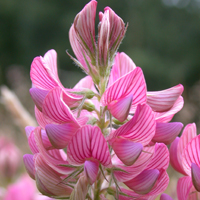 |
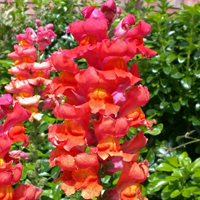 |
Pinks - Petals with ragged edges and darker markings at the centre
|
Peas and Vetches - Relatively large, 'blousy' flowers on trailing or scrambling plants with tendrils
|
Peas and Vetches - Loose, open spikes of 'winged' flowers
|
Snapdragons - Bright clusters of tubular, two-lipped flowers; any shade of red, pink, orange, yellow or white
|
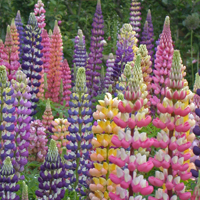 |
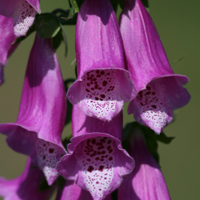 |
 |
 |
Lupins - Tall, showy spikes of 'pea' flowers, often in a variety of colours
|
Common Foxglove - Impressive tall spikes of drooping, funnel-shaped flowers, spotted on the inside
|
Gladioli - Six petals free at the top but forming a tube-like flower; several flowers carried in a one-sided, upright spike
|
Broomrapes - Narrowly tubular flowers in a spike, arising straight from the ground with no leaves or stems
|
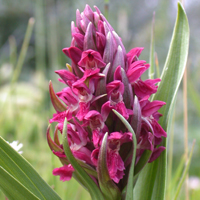 |
 |
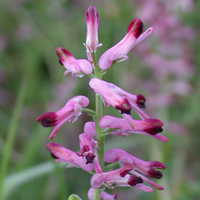 |
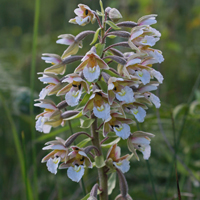 |
Orchids - Dense spikes of 'winged' flowers
|
Fumitories - Spikes of tubular flowers, arising from a bulbous root in spring
|
Fumitories - Tubular flowers in loose spikes above ferny foliage; scrambling or trailing on disturbed ground
|
Marsh Helleborine - Flowers various shades of greenish-red, pink and white in an open spike; rare in wet ground
|
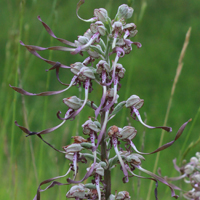 |
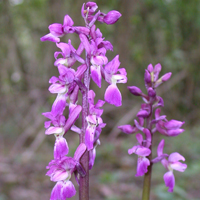 |
 |
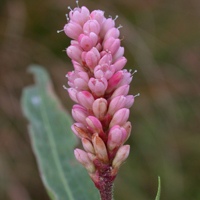 |
Lizard Orchid - Strange reddish/green flowers with elongated 'tails'; in a loose spike. Very rare
|
Orchids - Loose, open spikes of 'winged' flowers
|
Hyacinths - Heavily-scented, six-petalled flowers in a compact spike
|
Persicaries & Bistorts - Dense spikes of pink or white flowers; may be upright or arching
|
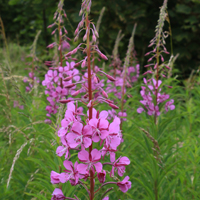 |
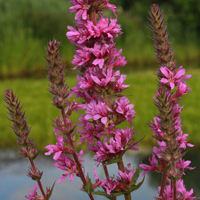 |
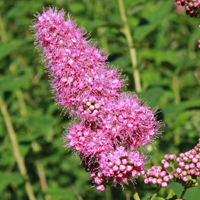 |
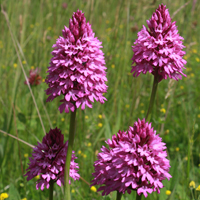 |
Rosebay Willowherb - Colonies of tall spikes of four-petalled flowers
|
Loosestrifes - Tall, slender spikes of many, narrow-petalled flowers; leaves narrow
|
Spiraeas - Showy spikes of tiny flowers, above a thicket of slender woody stems
|
Orchids - Dense spikes of 'winged' flowers
|
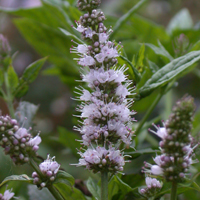 |
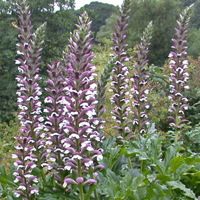 |
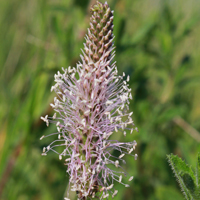 |
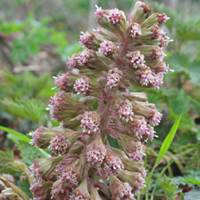 |
Mint family - Clusters of tubular flowers, opening to a broad, four-lipped mouth; in whorls at the leaf bases
|
Bear's-breeches - Large, upright spikes of showy, two-coloured flowers
|
Plantains - Many flowers in narrow, upright spikes above flat rosettes of leaves; usually in short grass
|
Heliotropes and butterburs - Cylindrical spikes with tufts of densely packed flowers, arising directly from the ground before the leaves appear
|
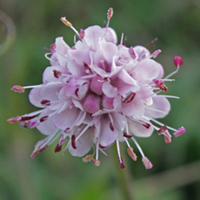 |
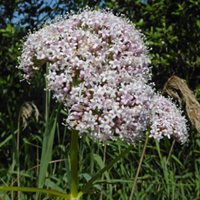 |
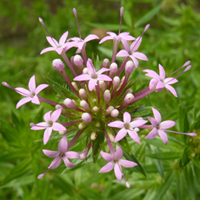 |
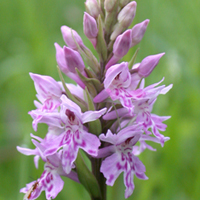 |
Scabiouses - Tight heads of many flowers, with the outer flowers having larger petals
|
Valerians - Tiny, five-petalled flowers in dense, flat or rounded heads - similar to elder but not woody shrubs
|
Caucasian Crosswort - Flowers in rounded clusters at the ends of trailing stems with linear leaves in whorls of 6-9
|
Orchids - Dense, columnar or pointed spikes of pink flowers with darker spots on an enlarged, lower lip (labellum)
|
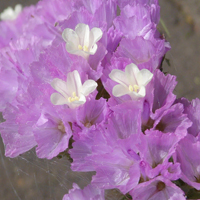 |
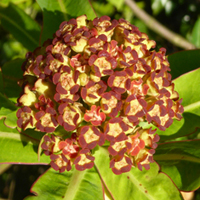 |
Statice - Branched heads of many, small (white) flowers surrounded by large, petal-like, coloured bracts
|
Spurges - Shrub-like plants with lush leaves and large, rounded clusters of reddish-brown flowers and milky sap
|
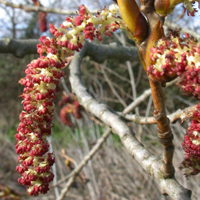 |
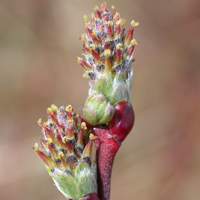 |
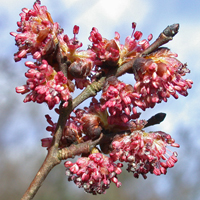 |
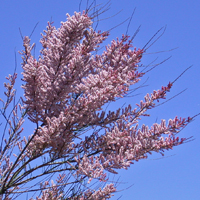 |
Poplars - Pendulous 'catkins' of petalless flowers with large red stamens
|
Willows - Dense heads on bare twigs in spring
|
Elms - Clusters of reddish, petalless florets on bare twigs in spring
|
Tamarisks - Masses of slender flower clusters smothering twiggy branches
|
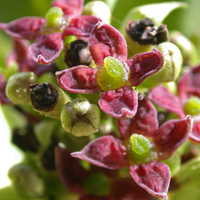 |
 |
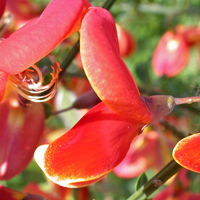 |
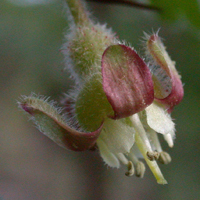 |
Japanese Aucuba - Flowers in open or tight clusters on evergreen bushes
|
Clematis - Spring-flowering, vigorous, woody climbers
|
Brooms - Broad petals, the upper one the largest, the lower two fused to form a boat-shaped 'keel', on wiry, green-stemmed plants
|
Currants - Red-tinged, solitary, greenish flowers on low, woody plants
|
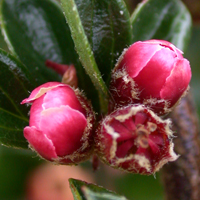 |
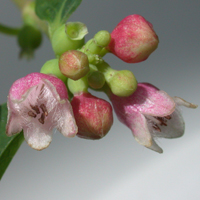 |
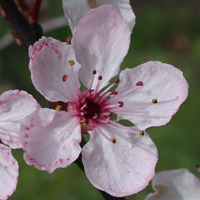 |
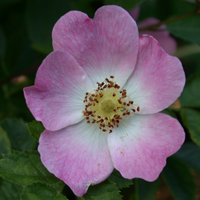 |
Cotoneasters - Small, five-petalled flowers that barely open, on low bushes with small, tough leaves
|
Snowberries - Small clusters of small, five-petalled flowers on the ends of branches with rounded leaves; suckering shrubs
|
Rose Family - Five-petalled flowers with prominent stamens on woody trees and shrubs
|
Rose Family - Five-petalled flowers with prominent stamens on spiny shrubs or scrambling plants
|
 |
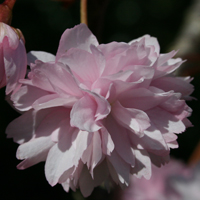 |
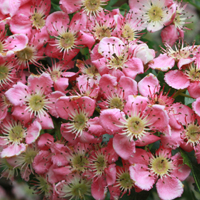 |
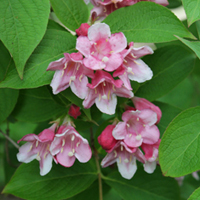 |
Teaplants - Solitary, purplish flowers on wiry, half-woody stems in hedgerows
|
Cherries - Spring-flowering trees with 'pompom' flowers bearing many petals
|
Rose Family - Bunches of five-petalled flowers with many stamens at the centre
|
Weigela - Bunches of showy, five-petalled flowers that are tubular at the base
|
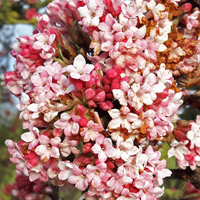 |
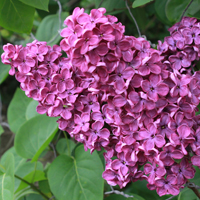 |
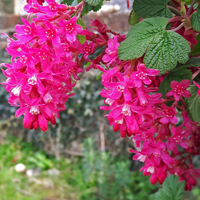 |
 |
Viburnums - Tubular flowers in showy clusters, heavily scented and emerging in winter/early spring, before the leaves
|
Lilacs - Large, showy heads of four-petalled flowers on suckering large shrubs or small trees. Flowers varying colours of purple, red, pink or white
|
Flowering Currant - Drooping clusters of brilliant pink/red flowers on multi-stemmed bushes in spring
|
Spiraeas - Showy spikes of tiny flowers, above a thicket of slender woody stems
|
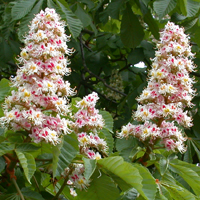 |
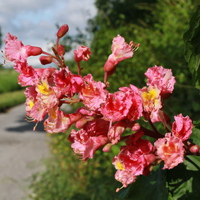 |
 |
 |
Horse Chestnuts - Tall, candelabra flowers on large trees with fingered leaves
|
Horse Chestnuts - Tall, candelabra flowers on large trees with fingered leaves
|
Heath Family - Hanging pink or pinkish-white, urn-shaped flowers, usually on woody or twiggy plants
|
Cape Figworts - Clusters of hanging flowers on more or less woody stems
|
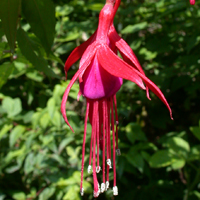 |
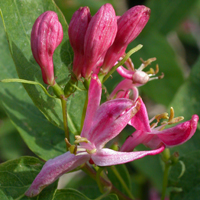 |
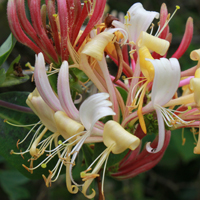 |
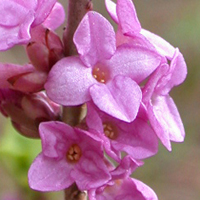 |
Fuchsias - Hanging flowers with very long stamens; various shades of red or pink with purple or white
|
Honeysuckles - Five narrow petals with prominent stamens
|
Honeysuckles - Spidery flowers pink in bud, opening yellowish-white, on twining climbers
|
Mezereon - Highly scented flowers on bare stems before the leaves in late winter or early spring
|
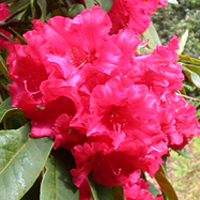 |
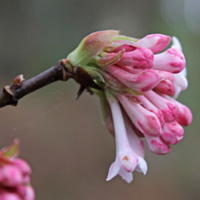 |
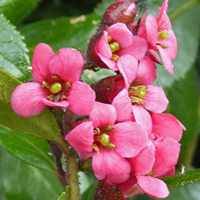 |
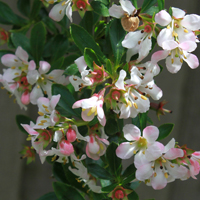 |
Rhododendrons - Spreading, evergreens with large, leathery leaves and tight clusters of large, showy flowers
|
Viburnums - Tubular flowers in showy clusters, heavily scented and emerging in winter/early spring, before the leaves
|
Escallonias - Evergreen shrubs with bunched heads of flowers in various shades of pink
|
Escallonias - Evergreen shrubs with bunched heads of flowers in various shades of pink
|
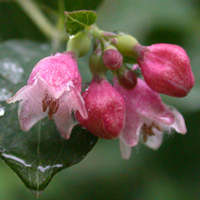 |
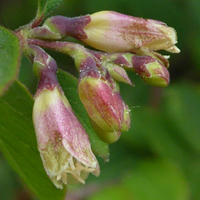 |
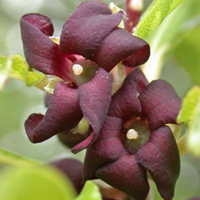 |
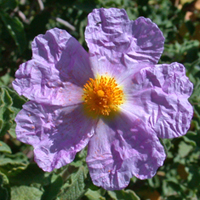 |
Honeysuckle Family - Low, suckering bushes with opposite, rounded leaves and tiny flowers in tight clusters at the tips of the branches
|
Honeysuckle Family - Low, suckering bushes with opposite, rounded leaves and tiny flowers in tight clusters at the tips of the branches
|
Pittosporums - Evegreen shrubs with shiny leaves and thin, wiry stems
|
Pink Rock-roses - Evegreen shrubs with hairy leaves and flowers with tissue-like, crumpled petals
|
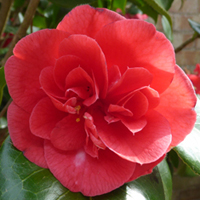 |
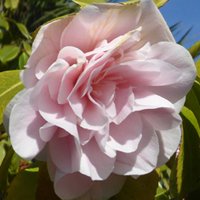 |
 |
Japanese Camellia - Evergreen bushes with leathery leaves and large, showy flowers in red, white or pink
|
Japanese Camellia - Evergreen bushes with leathery leaves and large, showy flowers in red, white or pink
|
Red Jasmine - Sprawling climbers with pinnate leaves and small clusters of tubular flowers
|